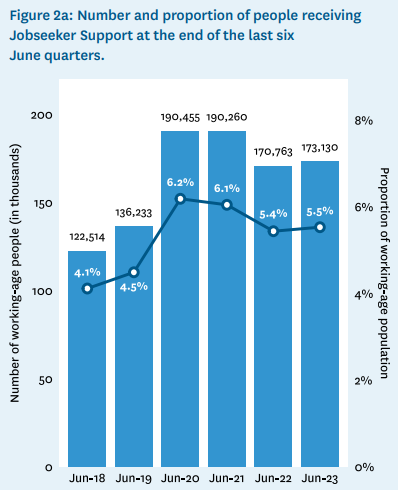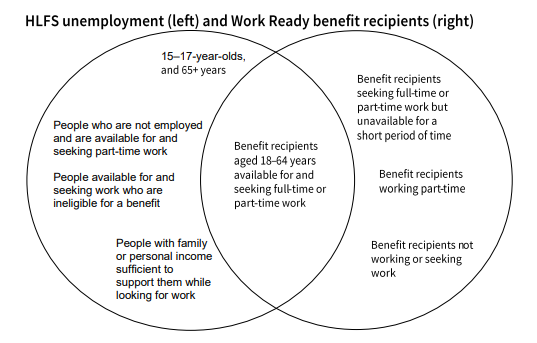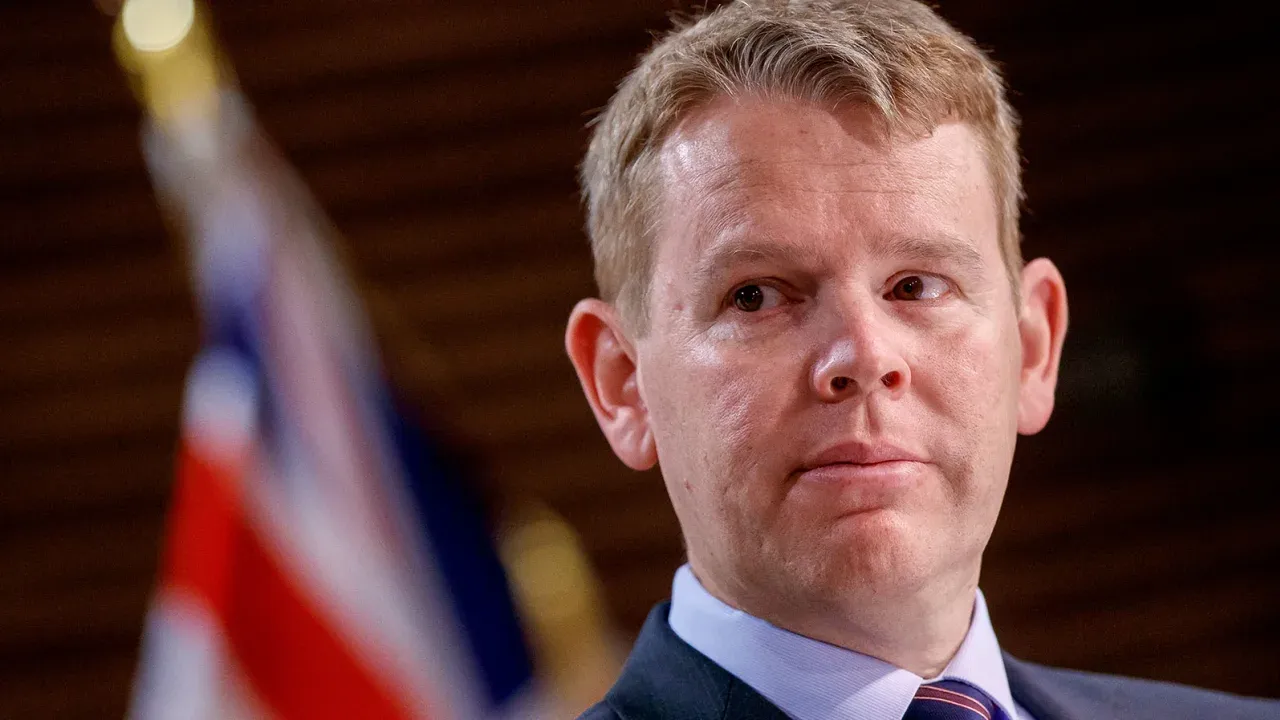Lindsay Mitchell
Lindsay Mitchell has been researching and commenting on welfare since 2001. Many of her articles have been published in mainstream media and she has appeared on radio,tv and before select committees discussing issues relating to welfare. Lindsay is also an artist who works under commission and exhibits at Wellington, New Zealand, galleries.
The following exchange took place in Parliament on Tuesday August 22nd:
_____________________________________________________________
Christopher Luxon: Given, and by his account, the economy is doing great, why are there 55,000 more people on the jobseeker benefit than when Labour took office, including 8,000 more in just the last four months?
Rt Hon CHRIS HIPKINS: There are more people in New Zealand—that is absolutely correct. The New Zealand economy’s fundamental indicators are looking more positive. Inflation is trending down, GDP growth is returning, and we continue to have record-low unemployment. On this side of the House, we are unapologetic about our commitment to keep Kiwis in jobs. I note that’s quite a contrast to members on the other side of the House, who are being quite open in their intention to increase unemployment.
Christopher Luxon: Why, then, if everything is so swimmingly great, are there 55,000 more people on jobseeker benefits?
Rt Hon CHRIS HIPKINS: As I’ve indicated, the population is, of course, larger, but we should also note that there are more people in the labour market.
______________________________________________________________
The following are the Jobseeker totals just prior to Labour assuming government, and the most recently available.
September 30, 2017 120,726
August 11, 2023 177,138
Jobseeker numbers are indeed up by at least the amount Luxon claimed. But Hipkins’ explanation, “the population is, of course, larger …” does not justify the difference.
A chart from MSD illustrates that in June 2018 4.1 percent of the working-age population was on a Jobseeker benefit. In June 2023 it was 5.5 percent. It will be slightly higher now. Yes, the population is larger, but so is the share that is on a Jobseeker benefit.

As well Hipkins said, “…we continue to have record-low unemployment.”
Also not correct. From StatsNZ:

Unemployment has been creeping up since March 2022.
Looking at the chart you may start to scratch your head. Why were there far fewer people on Jobseeker benefits in September 2017 when the unemployment rate was bigger at 4.7%?
That is a highly technical question that StatsNZ deals with here. A diagram from their paper illustrates the two distinct groups: that from which the HLFS data is drawn, and beneficiaries. It’s the HLFS which provides the official unemployment rate. The potential for the two measures to get out of sync and even trend in different directions is obvious. For instance, if someone on a Jobseeker benefit is not required to look for work, they will not appear as unemployed in the HLFS.

The reality is the Labour government made it easier to get on a benefit and to stay on a benefit. The result is evident.
And the Prime Minister cannot bat it away with incorrect claims and excuses.










